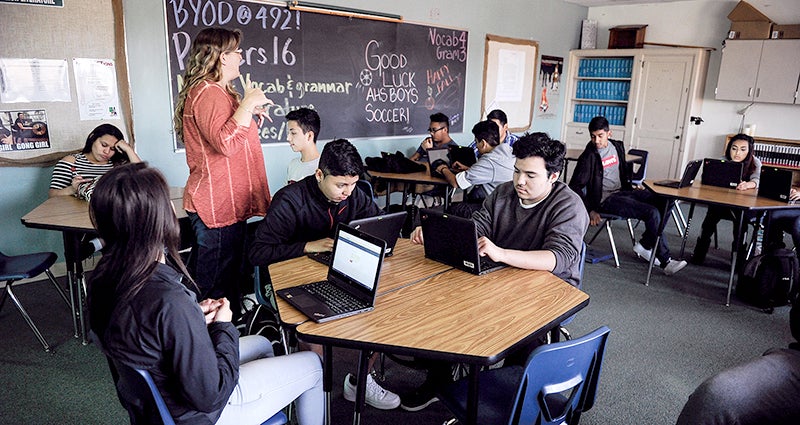Schools, community work to reinforce attendance
Published 8:36 am Monday, September 25, 2017

- Sophomores in the English Arts class get their laptops out to begin looking at an upcoming project. Herald file photo
Research shows chronic absenteeism has direct effect on achievement
A relatively new national campaign is under way that highlights school attendance and its impact on a child’s education.
In a presentation to the Austin School Board last month, Austin Aspires Executive Director Jennifer Lawhead said there is much research that shows how chronic absenteeism can have a direct impact on a child’s achievement.
A child missing 10 percent of a school year — about two days a month — can experience a measurable, negative impact in their academic performance. Conversely, improved attendance rates show that students are more likely to graduate from high school.
Austin Aspires has adopted school attendance as one of its projects and works with other community groups to spread the word. Austin Aspires is an organization that works to establish partnerships between schools and the community for the benefit of students. The school board also recognized that importance through a proclamation.
Lawhead and Austin Aspires colleague Sue Maus believe a heightened awareness in the community can support students. While those chronically absent do not make up a great number, said Maus, “I don’t think we always understand all the things that might be impacting a child’s absence — transportation might be a problem, or an illness; there are different factors” that don’t fit many people’s idea of what absenteeism might be.
The organization will host a poster contest with the positive attendance theme for the younger kids; the group is also using social media and reaching to church groups to emphasize the issue. Mower Refreshed and the Austin Positive Action Coalition are also talking about the issue in their organizations.
Austin Public Schools in the 2015-2016 school year (the more current numbers are not yet available) had a 93.25 percent K-12 attendance rate — a figure that has not varied much over the past five years, said Corey Haugen, director of research, evaluation and assessment for the district.
“To have 93, 94 percent of your students in school, every day, is pretty phenomenal,” Haugen saidof the almost 5,000 student enrollemnt. The statewide average is slightly higher, at just over 94 percent.
There are few surprises, he said, when looking at the percentages, grade by grade. Elementary and middle school grades have the highest rates in the district, while percentages begin to fall in grades 10-12. By 12th grade, there is an 82.58 attendance rate.
“That is pretty traditional” in those grades, he said, noting the decline comes from a variety of reasons. Some can be “even economics” when some students miss school in order to work and help support their families.
Kindergarten numbers are actually lower than their older elementary counterparts — and for good reason. Many of the students fall ill in the first year when they are exposed to more children.
While tracking attendance has always been important, the Austin school district took the step two years ago to form a Truancy Task Force that monitors attendance rates for students who are chronically absent. Before then, said task force head Sheri Willrodt, a small group would talk about concerns with student attendance. Later, it was decided a more formalized group with different entry points into student lives — school and community members, as well as truancy officers, police liaison and so on — should form.
A letter outlining consequences of absenteeism is sent to parents when a student reaches three days of unexplained absences. If a student is gone seven days that are not excused, an offshoot of the task force — an attendance review committee that includes County Attorney Kristen Nelsen — meets with parents to make sure they understand the consequences of not having a student in school, said Willrodt. Another meeting will follow, if needed, with both parents and students, and an action plan is developed. After that, more serious steps are taken. Parents can be charged in court for having a child chronically absent, but that happens rarely, said Willrodt.
“We’ve had successes” with the inclusion of Nelson, she said, and praised Nelsen’s willingness to meet with those families. “It has served to bridge the gap between what the school is trying to do, and the consequences of the student not attending.”
“If we can, we want to know the underlying reasons” for a pattern of non-attendance, Willrodt said. Some can be due to physical illness — some parents do not realize those are excused absences — or even emotional issues.
“In those cases, we definitely want to know about them so that we can help them get the help they need,” she said.



